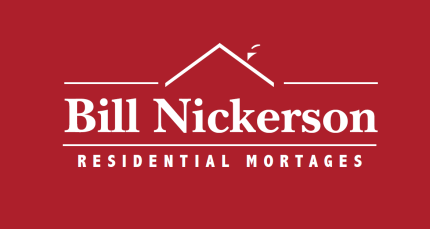Have you ever called a mortgage company and received a quote and then called back the next day and the same rate was no longer available??
Mortgage companies, Banks and Credit Unions are subject to potential daily and even hourly shifts in the market. Interest rates fluctuate on the simple principal of supply and demand. 
Mortgage rates trade based on Mortgage Back Securities and The Bond Markets as well as the overall economy. The vehicles that mortgage rates are based on are considered very conservative, stable and tend not to have the wild swings that one would find in the Stock Market. If the Stock market begins to see large increases or decreases, Investors will shift Billions of dollars in and out of the Stock Market and move them in to the Mortgage Markets. This will cause mortgage rates to either rise or fall. Stock Market tanks, good news for Mortgage Rates, Stock Market rallies and rates suffer. Investors and Traders will constantly shift funds out of the riskier stocks into the safe haven of the mortgage markets. These shifts can occur as little as once a day or in some cases can happen multiple times during a trading day. Thus causing mortgage rates to possibly change multiple times in a day.
These markets are affected globally as well; so even after the markets are closed in US, whatever is happening in Europe, Asia and around the world will cause our markets to move one way or the other.
Here are some of the variables that are being watched in today’s market:
- Covid-19 – Global Pandemic
- Ukraine
- Europe and Asia’s Economy
- Comments by the President
- Politics
- The US Housing Market
- Unemployment in our Country
- The Price of Oil and Gas
- The “Feds” decision to move short term interest rates
- The overall health of the US Economy

Any of these items can trigger a rally one way or another. Even a simple comment at a breakfast meeting by the President, the Fed Chairman or someone in power is enough to influence the markets.
Additional Mortgage Rate and Index Information:
To help us understand why mortgage rates change, it is important to realize that there is not one interest rate, but multiple ones. Below are some of the most prevalent interest rates and indexes that also have an impact on mortgage rates:
Prime rate – This rate is often offered to a bank’s best customers. If you are shopping for a home equity line of credit, then it is important to familiarize yourself with the prime rate. HELOCs are typically based upon the prime rate -plus or minus a certain percentage.
LIBOR – Stands for London Inter-bank Offered Rates. Libor rates are based upon the rates that a select group of London Banks offer each other for inter-bank deposits. Many adjustable rate mortgage programs use the Libor index.
Treasury bill rates ”T-bills” and Treasury Notes – These are short-term and intermediate debt instruments used by our Government to finance their debt. The treasury index is based upon the auctions of U.S. Treasury bills or on the Treasury’s yield curve. Like the LIBOR index, the U.S. Treasury index is a popular index for adjustable rate mortgage products. Also, the Twelve Month Treasury Average (12 Month MTA) is a popular index which is based upon the twelve month average of the monthly yields of U.S. Treasury securities (maturing in one year). The MTA is a popular choice for option arm mortgage programs.
Treasury Bonds – Unlike T-bills and Treasury Notes, treasury bonds are long-debt instruments. These bonds are used by the U.S. Government to finance its debt.
Cost of Savings Index – often referred to as the COSI index. This index is based upon the annual average of interest rates on World Savings deposit accounts. The average is pulled on the last day of each month.
11th District Cost of Funds – Often referred to as the COFI index – The COFI index is based upon the average of the borrowing cost to member banks of the Home Loan Bank of San Francisco of the 11th District. Unless you are shopping for an option arm mortgage, it is unlikely that your loan will be affected by this rate.
Certificates of Deposit Index – Often referred to as the CODI index – this index is arrived at by calculating the average of the past twelve months rates of 3 month CD rates.
Federal Funds Rate – The fed funds target rate is the rate which federally chartered banking institutions lend balances to other depository banks overnight.
This is a lot of information to weigh each day when calculating mortgage rates. In general, most Banks, Investors, Lenders etc. will set rates around 10:30am once most of the morning economic reports have been released and the markets have had time to react to the information. In a calm trading day on Wall Street, these rates would be good for that  day. In a day where lots of Economic reports and World events are occurring, these rates can be reset a few times as the Markets fluctuate. It is important to call your lender or bank often to check on these rates as they can and will change. It also important not to follow online rate sites that may be posting Average Rates as this information can be old as well a different Financial Picture then you may have. The Freddie Mac rates are based on closed loans from last week and an average of .7 Points of fees in the rate. This may give you a range, but not accurate enough to base your mortgage payment on or what is happening today in the markets.
day. In a day where lots of Economic reports and World events are occurring, these rates can be reset a few times as the Markets fluctuate. It is important to call your lender or bank often to check on these rates as they can and will change. It also important not to follow online rate sites that may be posting Average Rates as this information can be old as well a different Financial Picture then you may have. The Freddie Mac rates are based on closed loans from last week and an average of .7 Points of fees in the rate. This may give you a range, but not accurate enough to base your mortgage payment on or what is happening today in the markets.
Bill Nickerson has been in the Mortgage industry since 1991. Please leave a comment, email or call me anytime with questions you may have about mortgage programs, rates and to get approved for a mortgage.
NMLS# 4194 www.billnickerson.com 978-273-3227
 Bill Nickerson
Bill Nickerson

42.496207
-71.125820
 We have been spoiled with mortgage rates over the last few years as we saw the the 30 Year Fixed Rate get to the 2.50% range. As we move forward in 2022, mortgage rates have already started to climb. Rates are in the 4.00% to 4.25% range and we now have to adjust our purchasing power. Each half of a percent (.50%) in mortgage rate equates to about $25,000 of buying power. Depending upon when you were “Pre-Approved” for a mortgage, the new rates may greatly affect the home you now qualify for.
We have been spoiled with mortgage rates over the last few years as we saw the the 30 Year Fixed Rate get to the 2.50% range. As we move forward in 2022, mortgage rates have already started to climb. Rates are in the 4.00% to 4.25% range and we now have to adjust our purchasing power. Each half of a percent (.50%) in mortgage rate equates to about $25,000 of buying power. Depending upon when you were “Pre-Approved” for a mortgage, the new rates may greatly affect the home you now qualify for.












 And don’t be afraid to ask questions through the process. Typically, the person in charge of your escrow will move quickly through a lot of their checklist, but they are never too busy to answer questions and explain how and what the documents mean. Escrow also appreciates clear communication on any special requests. Can’t be there for the close and prefer to sign documents in the office with a notary, e-sign on your phone or computer, or have a mobile notary visit your home to sign? These are arrangements that need to be put in place long before the closing date. And if there are other parties to the transaction (like co-signers) the same applies to them.
And don’t be afraid to ask questions through the process. Typically, the person in charge of your escrow will move quickly through a lot of their checklist, but they are never too busy to answer questions and explain how and what the documents mean. Escrow also appreciates clear communication on any special requests. Can’t be there for the close and prefer to sign documents in the office with a notary, e-sign on your phone or computer, or have a mobile notary visit your home to sign? These are arrangements that need to be put in place long before the closing date. And if there are other parties to the transaction (like co-signers) the same applies to them.






 Homeowners doing major renovations this summer may not want to hear it, but there’s actually such a thing as doing too much. Spending too much. Adding too much.
Homeowners doing major renovations this summer may not want to hear it, but there’s actually such a thing as doing too much. Spending too much. Adding too much.





